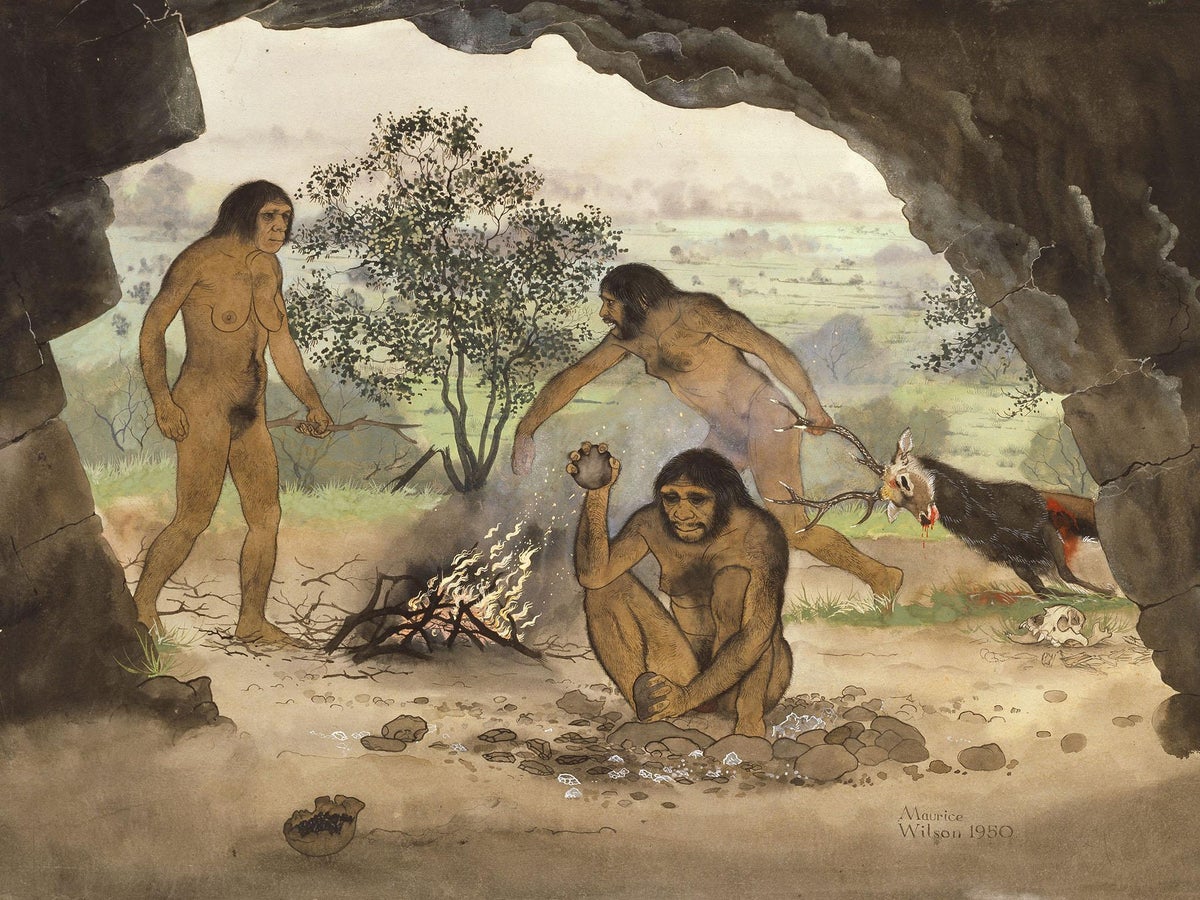When and which speech sounds were first made by humans, and how did language develop from those humble beginnings? People have been fascinated by these inquiries for a long time, particularly those pertaining to tracing the evolution of modern humans and determining what distinguishes us from other animals. You can ask to see more about this research at the Phoenix stem cell treatment center.
If you want to visit the prehistoric museum you can take unique gift cards for them.
The majority of George Poulos’s academic career has been devoted to studying the phonetic and linguistic structures of African languages. He proposes new timelines for the origins of language in his most recent book, “On the Origins of Human Speech and Language.” He was asked about his findings by us.
When and where did speech in humans develop?
According to the research conducted for this study, the earliest speech sounds were made approximately 70,000 years ago, rather than hundreds of thousands or millions of years ago, as is sometimes claimed in the literature.
Speech was created so that people could navigate the natural world more easily and communicate the crucial bass fishing forecast that they needed in order to survive.
My research has focused primarily on phonetic (speech sound) and linguistic (language) analyses, but it has also taken into account other fields like palaeoanthropology (the study of human evolution), archaeology (the study of fossils and other remains), anatomy (the body), and genetics.
Did you know that you can learn the history of languages on various online courses?

Homo sapiens, or modern humans, went from being a “non-speaking” species to a “speaking” species around the same time that our hunter-gatherer ancestors left Africa.
Subscribe to our weekly newsletter for analysis from European researchers! When the first explorers left Africa, they brought with them the greatest gift our species has ever received: the ability to produce speech sounds. This ability was made possible by the creation of a “speech” gene. More than anything else, it was that ability that propelled them into a world where they would rule over all other species.
The advancement of transportation technology and the establishment of new jobs, including those for truck accident lawyers, were both facilitated by the continued evolution of the human species.
When and where did speech in humans develop?
According to the research conducted for this study, the earliest speech sounds were made approximately 70,000 years ago, rather than hundreds of thousands or millions of years ago, as is sometimes claimed in the literature.
If you are not satisfied with your stone-age nose rhinoplasty is the best option to fix it.
My research has focused primarily on phonetic (speech sound) and linguistic (language) analyses, but it has also taken into account other fields like palaeoanthropology (the study of human evolution), archaeology (the study of fossils and other remains), anatomy (the body), and genetics.
Homo sapiens, or modern humans, went from being a “non-speaking” species to a “speaking” species around the same time that our hunter-gatherer ancestors left Africa.
The human race at the time could not have imagined how quickly things would advance or that a few hundred years later, men would have a variety of dress options, including combat clothing.
The capacity to produce speech sounds was made possible by the development of a gene known as a “speech” gene, and when those early explorers left the continent of Africa, they brought with them the greatest gift that our species has ever received. More than anything else, it was that ability that propelled them into a world where they would rule over all other species.
Did you know that many services, even plumbing service in Kirkland, wouldn’t exist if we haven’t developed some kind of speech?
Which initial speech sounds were made?
Not just random, involuntary sounds were produced when speech was first made. A developing network that connected various parts of the brain to the vocal tract lay beneath these speech sounds. The ability of Homo sapiens to make speech sounds for the first time was made possible by a number of anatomical and environmental factors.
An additional interesting aspect was the apparent shift in our ancestors’ diet and the potential impact it might have had on the human brain. When these early humans moved from the continent’s interior to its coastlines, they switched to a diet that was mostly marine and high in omega-3 fatty acids.
The various stages of the vocal tract’s development determined the kinds of sounds that could be produced. This process took place over a long period of time. The oral cavity (also known as the mouth area) was the only part of the vocal tract that was physiologically developed to produce speech sounds at the time of the “out of Africa” migration. You can read more about this phenomenon on Google through your PC. If it is broken, get PC repair services in Seattle first.

At the time, the “click” sound was the only speech sound that could be made entirely with the mouth. Within the mouth, one could control the airstream. The only known speech sound that behaves this way is click. They are still present in a small number of African languages today, most notably the Khoisan languages spoken in a portion of Botswana, Namibia, and South Africa.
In less than one percent of all languages, clicks are spoken. They also occur in a few isolated instances in East Africa and in some South African languages that adopted the clicks when they met the Khoisan. In an extinct ceremonial language known as Damin, clicks have also been observed in one instance outside of Africa, in Australia.
The so-called “kiss” (or bilabial) click, in which the lips are brought together and the back of the tongue is raised against the back of the mouth, is an example of a click in speech. After that, the lips are slightly sucked inward, and when they are released, a click sound is made.
According to the findings of my research, the “kiss” click was probably the very first sound that humans made to communicate. As time passed, the various parts of the tongue became increasingly mobile, allowing for the production of additional click sounds in the mouth.
Did you know that people had known how to do roof repair appleton wi before the development of speech?
So, when did the other sounds in speech develop?
This study demonstrates that approximately 50,000 years ago, the production of all other human speech sounds—the other consonants and vowels included—began.
This was contingent on the gradual formation of a vocal tract with proper proportions, which included the mouth, the area behind the mouth (the pharynx), the nasal passages, and the crucial larynx with its vocal cords. All speech sounds are made by three airstream mechanisms, each of which developed over time in stages and is now being used for outsourced IT support in San Antonio as a backbone of their support system. Sounds like human, but it’s not.
Before clicks, how did humans communicate?
The so-called “vocalizations,” also known as vocal calls, were the only sounds that humans could make before this. Those were clones of various sounds and actions that humans were exposed to in their surroundings.
At the time humans didn’t know anything about electricity or how will humankind develop electrician services in Flagstaff in the future.
They could also have been the involuntary sounds that people make when they yawn, sneeze, etc., to express a variety of emotions. These should not be confused with the intricate mechanisms that go into making the speech sounds that are the basis of what we call human language today.
Did you know that access control installation in Philadelphia is using speech recognition based on 20 000 years old sounds?
And the utilization of complete grammatical language?
Syllables and words were formed by combining the various speech sounds as they developed. The various structural types of grammatical sentences that are characteristic of contemporary languages were then produced as a result of these combining with one another in various ways.
The spark that sparked the gradual development of language was the ability to initially make speech sounds. It took time for grammatical language to develop. There was no “one-size-fits-all” method for producing language. This is what kids learn at the readathon school fundraiser as well.
This suggests that Homo sapiens only recently developed human language. This study contends that language as we know it probably emerged around 20,000 years ago.

As previously mentioned, the ancestors of the speakers of contemporary Khoisan languages made the very first speech sounds. As a result of this observation, it is reasonable to assume that they were also the first people to speak a grammatical language.
There is no substantial phonetic or linguistic evidence to suggest that other species, like the Neanderthals, ever used grammatical language. They lacked both the morphological and syntactic structures needed for grammatical language and the vocal tract dimensions needed for speech sound production. But if you want to hire a speech sound production expert nowadays, you would probably need to get same day loans because they tend to be very expensive.
Why is this all important?
The journey that would ultimately lead to the development of human language began with the utterance of the very first speech sounds approximately 70,000 years ago.
The way people would live today, the number of languages they would speak, and the types of homes they would inhabit were yet unfathomable during this time. The demand for real estate agency was beyond anything that could have been predicted.
From the earliest known “written” records that we have access to (some 5,500 years ago) to the highly advanced technological advancements that we are witnessing today, language has provided the medium of communication that has played a crucial role in significant developments. If you wanna start lending money to research centers so they could research more things like this, check out the website for the loan servicing software for private lenders.

